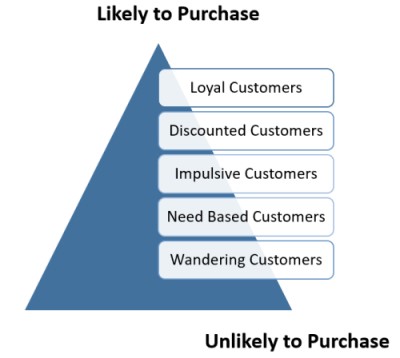Customer Loyalty – Meaning and its Important Concepts
April 3, 2025
 Customer Loyalty – Meaning and its Important Concepts
Customer Loyalty – Meaning and its Important Concepts
Every supplier wants to create and retain a loyal customer who engages in continued profitable business with him. Customer Loyalty is the measure of success of the supplier in retaining a long term relationship with the customer. Thus customer loyalty is when a supplier receives the ultimate reward of his efforts in interacting with its…
 Customer Modeling – Meaning and its Different Aspects
Customer Modeling – Meaning and its Different Aspects
Customer modeling is the process of predicting and forecasting behavioral aspects of customers’ future perspectives. The process includes identification of marketing and campaigning targets and optimizing predictive analysis. Following are the broadly discussed aspects of customer modeling: Response modeling – Modeling enhances the organization’s knowledge on each individual customer and identify if the customers under…
 Customer Profiling
Customer Profiling
For a developing business it is very important to understand who are the best customers, how to find more customers like these and where to find. Customer profiling is the best strategy to accomplish this. It helps to find valuable new customers, enhance the profitability by retaining existing customers and also identify low valued customers…
Customers play the most significant part in business. In fact the customer is the actual boss in a deal and is responsible for the actually profit for the organization.
Customer is the one who uses the products and services and judges the quality of those products and services. Hence it’s important for an organization to retain customers or make new customers and flourish business.
To manage customers, organizations should follow some sort of approaches like segmentation or division of customers into groups because each customer has to be considered valuable and profitable.
Customers can be of following types:
These customers revisit the organization over times hence it is crucial to interact and keep in touch with them on a regular basis and invest much time and effort with them. Loyal customers want individual attention and that demands polite and respectful responses from supplier.
Loyal customers are the ones who will act as advocate for your organization.
More is the discount the more they tend towards buying. These customers are mostly related to small industries or the industries that focus on low or marginal investments on products.
Focus on these types of customers is also important as they also promote distinguished part of profit into business.

Handling these customers is a challenge as they are not particularly looking for a product and want the supplier to display all the useful products they have in their tally in front of them so that they can buy what they like from that display.
If impulsive customers are treated accordingly then there is high probability that these customers could be a responsible for high percentage of selling.
These are frequent customers but do not become a part of buying most of the times so it is difficult to satisfy them.
These customers should be handled positively by showing them ways and reasons to switch to other similar products and brands and initiating them to buy these.
These customers could possibly be lost if not tackled efficiently with positive interaction.
These customers are normally new in industry and most of the times visit suppliers only for confirming their needs on products.
They investigate features of most prominent products in the market but do not buy any of those or show least interest in buying.
To grab such customers they should be properly informed about the various positive features of the products so that they develop a sense of interest.
An organization should always focus on loyal customers and should expand or multiply the product range to leverage impulsive customers.
For other types of customers strategies should be renovated and enhanced for turning out these customers to satisfy their needs and modify these types of customers to let them fall under loyal and impulsive category.
Your email address will not be published. Required fields are marked *